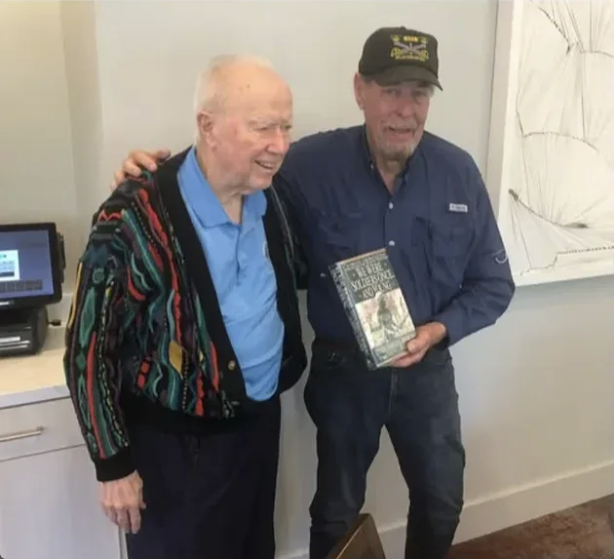
Ia Drang Valley, under heavy fire. Major Bruce Crandall flew his unarmed Huey into the kill zone—22 times. Every flight meant death could find him, but he kept going.
“We’ve got wounded down there!” he radioed. “I’m not leaving them!”
Ammunition in, wounded soldiers out. Again and again. His crew begged him to stop. “Not while they’re still breathing,” he said.
He earned the Medal of Honor. But survivors call him simply “the man who never left us behind.”
Twenty-two times. Read that again. Not once in a moment of adrenaline-fueled heroism. Not twice when desperation demanded it. Twenty-two times, Major Bruce Crandall flew an unarmed helicopter into a kill zone where enemy fire was so intense that death seemed inevitable. And every single time, he knew exactly what he was risking.
The Ia Drang Valley battle was one of the Vietnam War’s bloodiest engagements. American soldiers were pinned down, wounded, dying. They needed ammunition to keep fighting and evacuation to survive their injuries. But getting to them meant flying through a gauntlet of enemy fire that had already claimed aircraft and lives.
Most pilots would have made the calculation: flying in once might be heroic. Twice might be pushing luck. But twenty-two times? That’s not luck. That’s a death wish. Except it wasn’t. It was a man who understood that soldiers dying on the ground deserved someone willing to risk everything to save them.
“We’ve got wounded down there! I’m not leaving them!” Not a question. Not a discussion with commanding officers about acceptable risk. A declaration that as long as wounded soldiers were breathing, he was going back.
His crew begged him to stop. They were in that helicopter with him, experiencing the same incoming fire, watching rounds tear through their aircraft, understanding that each flight reduced their odds of survival. They weren’t cowards—they’d already flown into hell multiple times. They were rational humans recognizing that continuing this mission meant probable death.
“Not while they’re still breathing.” That was his answer. As long as wounded soldiers remained alive on that battlefield, he was flying in. The mathematics of probability, the pleas from his crew, the increasing damage to his helicopter—none of it mattered compared to the lives depending on him.
Ammunition in, wounded soldiers out. That was the mission, repeated twenty-two times. Flying in with supplies that allowed ground troops to keep fighting. Loading wounded men into his helicopter, some barely conscious, some screaming in pain, all of them knowing this pilot was risking his life to save theirs.
He earned the Medal of Honor—America’s highest military decoration, reserved for extraordinary acts of valor. The official citation describes his actions in formal military language. But the soldiers he saved don’t need formal language. They call him “the man who never left us behind.”
That title means more than any medal. Because those soldiers know what it means to be pinned down, wounded, thinking you’re going to die in a jungle valley far from home. And then hearing helicopter blades. Seeing that Huey descend through enemy fire. Knowing someone was risking everything to get you out. Not once, but however many times it took until everyone who could be saved was saved.
The photo shows Major Crandall decades later, an elderly man holding a book about his experiences. He’s standing with another veteran, both of them bearing the weight of memories most people can’t fathom. He looks ordinary—just an old man in casual clothes. But the men he saved know the truth. When it mattered most, he was extraordinary.
Twenty-two times into a kill zone. Not while they’re still breathing. The man who never left us behind. That’s not just heroism. That’s a promise kept at the potential cost of everything, repeated until everyone who could be saved was saved.